Physicochemical Characteristics of Chitosan-Based Hydrogels Containing Albumin Particles and Aloe vera Juice as Transdermal Systems Functionalized in the Viewpoint of Potential Biomedical Applications
Abstract
:1. Introduction
2. Materials and Methods
2.1. Materials
2.2. The Synthesis Methodology of the Hydrogels
2.3. Methodology of the Investigations
2.3.1. Structural Analysis of the Hydrogels via Fourier Transform Infrared (FT-IR) Spectroscopy
2.3.2. Evaluation of the Hydrogels via Raman Spectroscopy
2.3.3. Analysis of the Crystallinity of the Hydrogels under the Tensile Load via the X-ray Diffraction (XRD) Technique
2.3.4. Morphological Analysis of the Hydrogels via Scanning Electron Microscopy (SEM)
2.3.5. Studies on the Swelling Properties of the Hydrogels
2.3.6. Wettability Measurements of the Hydrogels
2.3.7. Investigations on the Mechanical Properties of the Hydrogels
2.3.8. Studies Aimed at Determining the Release Profile of the Active Substance from the Hydrogel Matrices
2.3.9. Studies on the Cytotoxicity of the Hydrogels via MTT Reduction Assay
2.3.10. Statistical Analysis of the Data of the Performed Experiments
3. Results and Discussion
3.1. Results of the Analysis of the Chemical Structure of the Hydrogels via FT-IR Spectroscopy
3.2. Results of the Raman Spectroscopy
3.3. Results of the Investigations on the Hydrogels’ Crystallinity via the XRD Technique
3.4. Morphological Analysis of the Hydrogels via SEM Technique
3.5. Investigations on the Swelling Properties of the Hydrogels
3.6. Assessment of the Wettability of the Hydrogels
3.7. Results of the Evaluation of the Mechanical Properties of the Hydrogels
3.8. Results of the Investigations on the Release of the Active Substance from the Developed Materials
3.9. Results of the Evaluation of the Cytotoxicity of the Developed Materials
4. Conclusions
- Both Raman and FT-IR spectroscopic analyses confirmed the presence of albumin in hydrogel matrices due to the presence of many bands corresponding to the protein structures on the obtained spectra.
- All hydrogels showed good swelling properties; the highest swelling was observed in distilled water. This is related to the fact that in the other tested liquids—SBF and Ringer liquid—mono- and divalent ions occur which may contribute to the formation of additional crosslinks between polymer chains which, in turn, leads to the reduction of the swelling capacity of hydrogels.
- The introduction of albumin into the hydrogels increased their sorption properties by approximately 10%.
- The modification of hydrogels with albumin particles also resulted in their increased resistance to the tensile load, i.e., approximately 30% more force was needed to break the hydrogels containing this protein. Analogous results were also obtained during an analysis of the crystallinity of the hydrogels under the tensile load via the XRD technique and mechanical tests.
- The contact angles of all the tested hydrogels were lower than 90°; thus, the hydrophilicity of the hydrogels was proved.
- The introduction of albumin spheres into the polymer matrices resulted in a preparation of drug carriers with an extended drug release profile.
- The developed hydrogels did not show cytotoxicity towards murine fibroblasts L929. Any negative impact of albumin spheres on this property was not observed. In vitro biological tests showed that the viability of the tested cells was within the range of 91—95%, which allows for the conclusion that there are no contraindications for performing more advanced biological experiments.
- Here, a main focus was to verify whether the developed hydrogel materials show an application potential for biomedical purposes. It was proved via MTT reduction assay that these polymers exhibited biological compatibility. This, in combination with their swelling properties, hydrophilicity, mechanical properties, and the ability to release an active substance from their interior makes them promising for biomedical applications and allows for the design of more advanced investigations aimed at verifying their utility, e.g., as wound dressings functionalized for delivery of specific drugs such as cytostatics and at the same time for the treatment of burn wounds. For this purpose, significant attention will be paid to the cytotoxic evaluation towards such cell lines as cancer cells or specific skin cells. The developed materials seem to be promising for such applications due to the soothing effect of Aloe vera juice, which is favorable in treating burns; the ability to perform drug release from hydrogel matrices; and the potential of these materials for wound exudate sorption. The affinity of albumin for neoplastic cells constitutes an additional important advantage when considering albumin-based particles as carriers of cytostatics.
Author Contributions
Funding
Institutional Review Board Statement
Informed Consent Statement
Data Availability Statement
Acknowledgments
Conflicts of Interest
References
- Wang, Y.; Burgess, D.J. Drug–device combination products. In Delivery Technologies and Applications; Woodhead Publishing Series in Biomaterials; Lewis, A., Ed.; Woodhead Publishing: Sawston, UK, 2010; pp. 3–28. [Google Scholar]
- Mehtani, D.; Seth, A.; Sharma, P.; Maheshwari, N.; Kapoor, D.; Shrivastava, S.K.; Tekade, R.K. Biomaterials for sustained and controlled delivery of small drug molecules. In Biomaterials and Bionanotechology; Tekade, R.K., Ed.; Elsevier: Hoboken, NY, USA, 2019; pp. 89–152. [Google Scholar]
- Al Hanbali, O.A.; Khan, H.M.S.; Sarfraz, M.; Arafat, M.; Ijaz, S.; Hameed, A. Transdermal patches: Design and current approaches to painless drug delivery. Acta Pharm. 2019, 69, 197–215. [Google Scholar] [CrossRef] [Green Version]
- Kissel, J.; Bunge, A.; Frasch, H.; Kasting, G. Dermal Exposure and Absorption of Chemicals. Compr. Toxicol. 2018, 1, 112–127. [Google Scholar] [CrossRef]
- Pastore, M.N.; Kalia, Y.; Horstmann, M.; Roberts, M. Transdermal patches: History, development and pharmacology. Br. J. Pharmacol. 2015, 172, 2179–2209. [Google Scholar] [CrossRef] [PubMed] [Green Version]
- Cheng, Y.-C.; Li, T.S.; Su, H.L.; Lee, P.C.; Wang, H.-M.D. Transdermal Delivery Systems of Natural Products Applied to Skin Therapy and Care. Molecules 2020, 25, 5051. [Google Scholar] [CrossRef]
- Akhtar, N.; Singh, V.; Yusuf, M.; Khan, R.A. Non-invasive drug delivery technology: Development and current status of transdermal drug delivery devices, techniques and biomedical applications. Biomed. Tech. Eng. 2020, 65, 243–272. [Google Scholar] [CrossRef] [PubMed] [Green Version]
- Citrome, L.; Zeni, C.M.; Correl, C.U. Patches: Established and emerging transdermal treatments in psychiatry. J. Clin. Psychiatry 2019, 80, 12554. [Google Scholar] [CrossRef] [PubMed]
- Sarheed, O.; Dibi, M.; Ramesh, K.; Drechsler, M. Fabrication of Alginate-Based O/W Nanoemulsions for Transdermal Drug Delivery of Lidocaine: Influence of the Oil Phase and Surfactant. Molecules 2021, 26, 2556. [Google Scholar] [CrossRef]
- Patel, P.; Pol, A.; Kalaria, D.; Date, A.A.; Kalia, Y.; Patravale, V. Microemulsion-based gel for the transdermal delivery of rasagiline mesylate: In vitro and in vivo assessment for Parkinson’s therapy. Eur. J. Pharm. Biopharm. 2021, 165, 66–74. [Google Scholar] [CrossRef] [PubMed]
- Fardous, J.; Yamamoto, E.; Omoso, Y.; Nagao, S.; Inoue, Y.; Yoshida, K.; Ikegami, Y.; Zhang, Y.; Shirakigawa, N.; Ono, F.; et al. Development of a gel-in-oil emulsion as a transdermal drug delivery system for successful delivery of growth factors. J. Biosci. Bioeng. 2021, 132, 95–101. [Google Scholar] [CrossRef]
- Rasekh, M.; Karavasili, C.; Soong, Y.L.; Bouropoulos, N.; Morris, M.; Armitage, D.; Li, X.; Fatouros, D.G.; Ahmad, Z. Elec-trospun PVP-indomethacin constituents for transdermal dressings and drug delivery devices. Int. J. Pharm. 2014, 473, 95–104. [Google Scholar] [CrossRef]
- Idrees, A.; Rahman, N.U.; Javaid, Z.; Kashif, M.; Aslam, I.; Abbas, K.; Hussain, T. In vitro evaluation of transdermal patches of flurbiprofen with ethyl cellulose. Acta Pol. Pharm. Drug Res. 2014, 71, 287–295. [Google Scholar]
- Eckert, R.; Wiemann, S.; Keck, C. Improved Dermal and Transdermal Delivery of Curcumin with SmartFilms and Nanocrystals. Molecules 2021, 26, 1633. [Google Scholar] [CrossRef] [PubMed]
- Silna, E.A.; Krishnaukumar, K.; Nair, S.K.; Narayanan, A.; Dineshkumar, B. Hydrogels In Topical Drug Delivery—A Review. Int. J. Innovat. Drug Discov. 2016, 6, 87–93. [Google Scholar]
- An, Y.-H.; Lee, J.; Son, D.U.; Kang, D.H.; Park, M.J.; Cho, K.W.; Kim, S.; Kim, S.-H.; Ko, J.; Jang, M.-H.; et al. Facilitated Transdermal Drug Delivery Using Nanocarriers-Embedded Electroconductive Hydrogel Coupled with Reverse Electrodialysis-Driven Iontophoresis. ACS Nano 2020, 14, 4523–4535. [Google Scholar] [CrossRef] [PubMed]
- Jung, H.; Kim, M.K.; Lee, J.Y.; Choi, S.W.; Kim, J. Adhesive Hydrogel Patch with Enhanced Strength and Adhesiveness to Skin for Transdermal Drug Delivery. Adv. Funct. Mater. 2020, 30, 2004407. [Google Scholar] [CrossRef]
- Viyoch, J.; Sudedmark, T.; Srema, W.; Suwongkrua, W. Development of hydrogel patch for controlled release of alpha-hydroxy acid contained in tamarind fruit pulp extract. Int. J. Cosmet. Sci. 2005, 27, 89–99. [Google Scholar] [CrossRef] [PubMed]
- Boriwanwattanarak, P.; Ingkaninan, K.; Khorana, N.; Viyoch, J. Development of curcuminoids hydrogel patch using chitosan from various sources as controlled-release matrix. Int. J. Cosmet. Sci. 2008, 30, 205–218. [Google Scholar] [CrossRef]
- Ishii, Y.; Nakae, T.; Sakamoto, F.; Matsuo, K.; Matsuo, K.; Quan, Y.-S.; Kamiyama, F.; Fujita, T.; Yamamoto, A.; Nakagawa, S.; et al. A transcutaneous vaccination system using a hydrogel patch for viral and bacterial infection. J. Control. Release 2008, 131, 113–120. [Google Scholar] [CrossRef] [PubMed]
- Fonseca, A.M.; Araujo, C.C.B.; Silva, J.H.; Honorio, T.S.; Nasciutti, L.E.; Cabral, L.M.; Carmo, F.A.; Sousa, V.P. Development of transdermal based hydrogel formulations of vinorelbine with an evaluation of their in vitro profiles and activity against mel-anoma cells and in silico prediction of drug absorption. J. Drug Deliv. Sci. Tec. 2021, 63, 102449. [Google Scholar] [CrossRef]
- Waithaka, P.N.; Gathuru, E.M.; Githaiga, B.M.; Kazungu, R.Z. Antimicrobial properties of Aloe vera, Aloe volkensii and Aloe secundiflora from Egerton University. Acta Sci. Microbiol. 2018, 1, 6–10. [Google Scholar]
- Subhashis, P.; Somit, D.; Tapas, K.C.; Soumen, B. Anti-inflammatory and protective properties of Aloe vera leaf crude gel in carrageenan induced acute inflammatory rat models. Int. J. Pharm. Pharm. Sci. 2014, 6, 368–371. [Google Scholar]
- Sleep, D. Albumin and its application in drug delivery. Expert Opin. Drug Deliv. 2014, 12, 793–812. [Google Scholar] [CrossRef] [PubMed]
- Onafuye, H.; Pieper, S.; Mulac, D.; Cinatl, J., Jr.; Wass, M.N.; Langer, K.; Michaelis, M. Doxorubicin-loaded human serum albumin nanoparticles overcome transporter-mediated drug resistance in drug-adapted cancer cells. Beilstein J. Nanotechnol. 2019, 10, 1707–1715. [Google Scholar] [CrossRef] [Green Version]
- Drabczyk, A.; Kudłacik-Kramarczyk, S.; Głąb, M.; Kędzierska, M.; Jaromin, A.; Mierzwiński, D.; Tyliszczak, B. Physicochemical Investigations of Chitosan-Based Hydrogels Containing Aloe vera Designed for Biomedical Use. Materials 2020, 13, 3073. [Google Scholar] [CrossRef]
- Kudłacik-Kramarczyk, S.; Drabczyk, A.; Głąb, M.; Alves-Lima, D.; Lin, H.; Douglas, T.; Kuciel, S.; Zagórska, A.; Tyliszczak, B. Investigations on the impact of the introduction of the Aloe vera into the hydrogel matrix on cytotoxic and hydrophilic properties of these systems considered as potential wound dressings. Mater. Sci. Eng. C 2021, 123, 111977. [Google Scholar] [CrossRef]
- Kudłacik-Kramarczyk, S.; Drabczyk, A.; Głąb, M.; Gajda, P.; Czopek, A.; Zagórska, A.; Jaromin, A.; Gubernator, J.; Makara, A.; Tyliszczak, B. The Development of the Innovative Synthesis Methodology of Albumin Nanoparticles Supported by Their Physicochemical, Cytotoxic and Hemolytic Evaluation. Materials 2021, 14, 4386. [Google Scholar] [CrossRef]
- Kokubo, T.; Takadama, H. How useful is SBF in predicting in vivo bone bioactivity? Biomaterials 2006, 27, 2907–2915. [Google Scholar] [CrossRef]
- Owens, D.K.; Wendt, R.C. Estimation of the surface free energy of polymers. J. Appl. Polym. Sci. 1969, 13, 1741–1747. [Google Scholar] [CrossRef]
- Rudawska, A.; Jacniacka, E. Analysis for determining surface free energy uncertainty by the Owen–Wendt method. Int. J. Adhes. Adhes. 2009, 29, 451–457. [Google Scholar] [CrossRef]
- Jaiswal, V.D.; Dongre, P. Biophysical interactions between silver nanoparticle-albumin interface and curcumin. J. Pharm. Anal. 2020, 10, 164–177. [Google Scholar] [CrossRef]
- Ferrari, M.; Cirisano, F.; Morán, M.C. Mammalian cell behavior on hydrophobic substrates: Influence of surface properties. Colloids Interfaces 2019, 3, 48. [Google Scholar] [CrossRef] [Green Version]
- An, N.; Raushfan, X.; Wieland, M.; Matejka, M.; Andrukhov, O.; Schedle, A. Initial attachment, subsequent cell prolifera-tion/viability and gene expression of epithelial cells related to attachment and wound healing in response to different titanium surfaces. Dent. Mater. 2012, 28, 1207–1214. [Google Scholar] [CrossRef]
- Webster, T.J.; Tran, P.A. Understanding the wetting properties of nanostructured selenium coatings: The role of nanostructured surface roughness and air-pocket formation. Int. J. Nanomed. 2013, 8, 2001–2009. [Google Scholar] [CrossRef] [PubMed] [Green Version]
- Li, G.; Huang, J.; Chen, T.; Wang, X.; Zhang, H.; Chen, Q. Insight into the interaction between chitosan and bovine serum albumin. Carbohydr. Polym. 2017, 176, 75–82. [Google Scholar] [CrossRef]
- Niaz, T.; Ihsan, A.; Abbasi, R.; Shabbir, S.; Noor, T.; Imran, M. Chitosan-albumin based core shell-corona nano-antimicrobials to eradicate resistant gastric pathogen. Int. J. Biol. MacroMol. 2019, 138, 1006–1018. [Google Scholar] [CrossRef] [PubMed]
- Karimi, M.; Avci, P.; Mobasseri, R.; Hamblin, M.; Naderi-Manesh, H. The novel albumin–chitosan core–shell nanoparticles for gene delivery: Preparation, optimization and cell uptake investigation. J. Nanoparticle Res. 2013, 15, 1–14. [Google Scholar] [CrossRef] [Green Version]
- ISO. Biological Evaluation of Medical Devices—Part 5: Tests for In Vitro Cytotoxicity; ISO-10993-5-2009; ISO: Geneva, Switzerland, 2021. [Google Scholar]
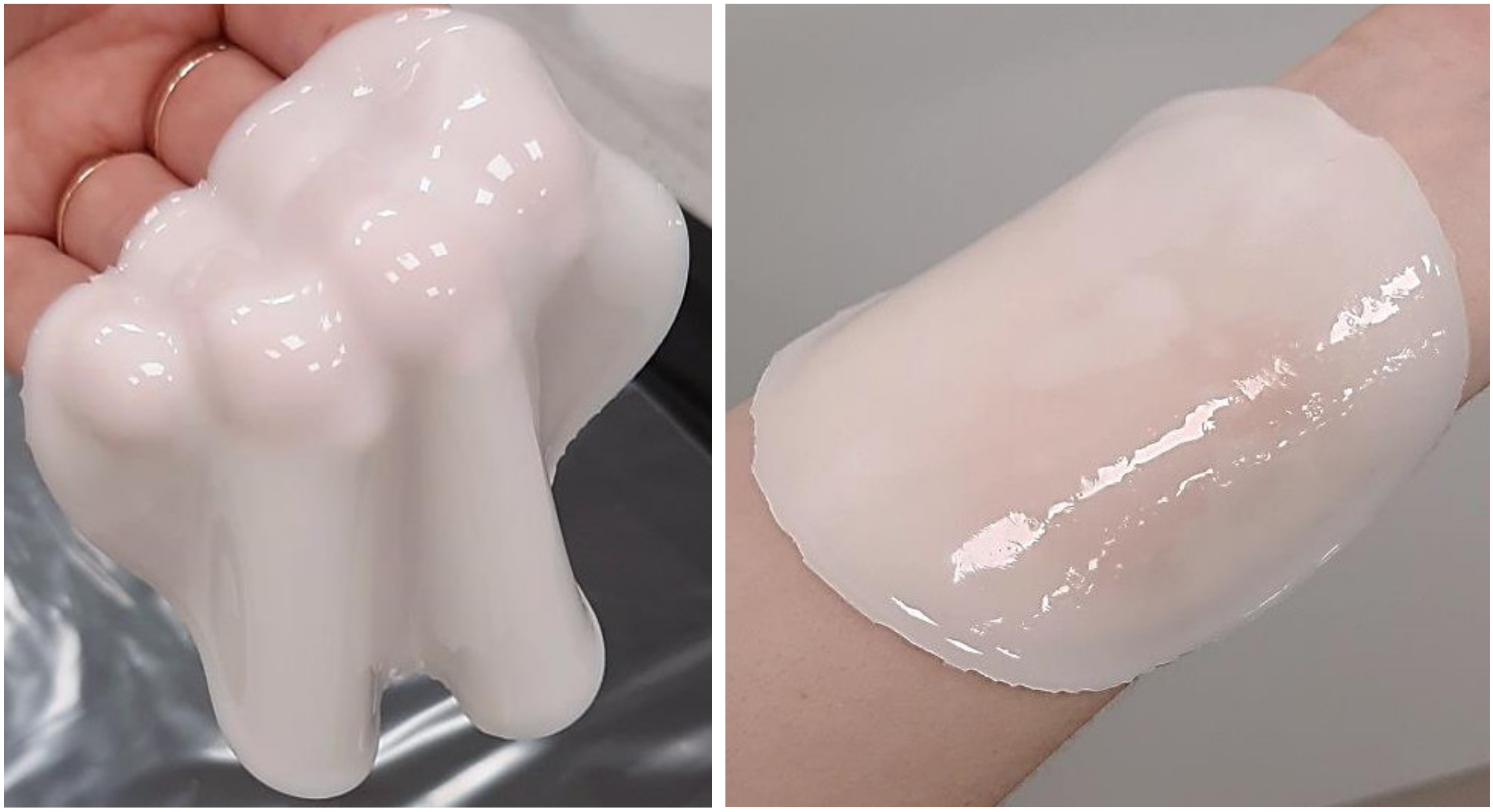

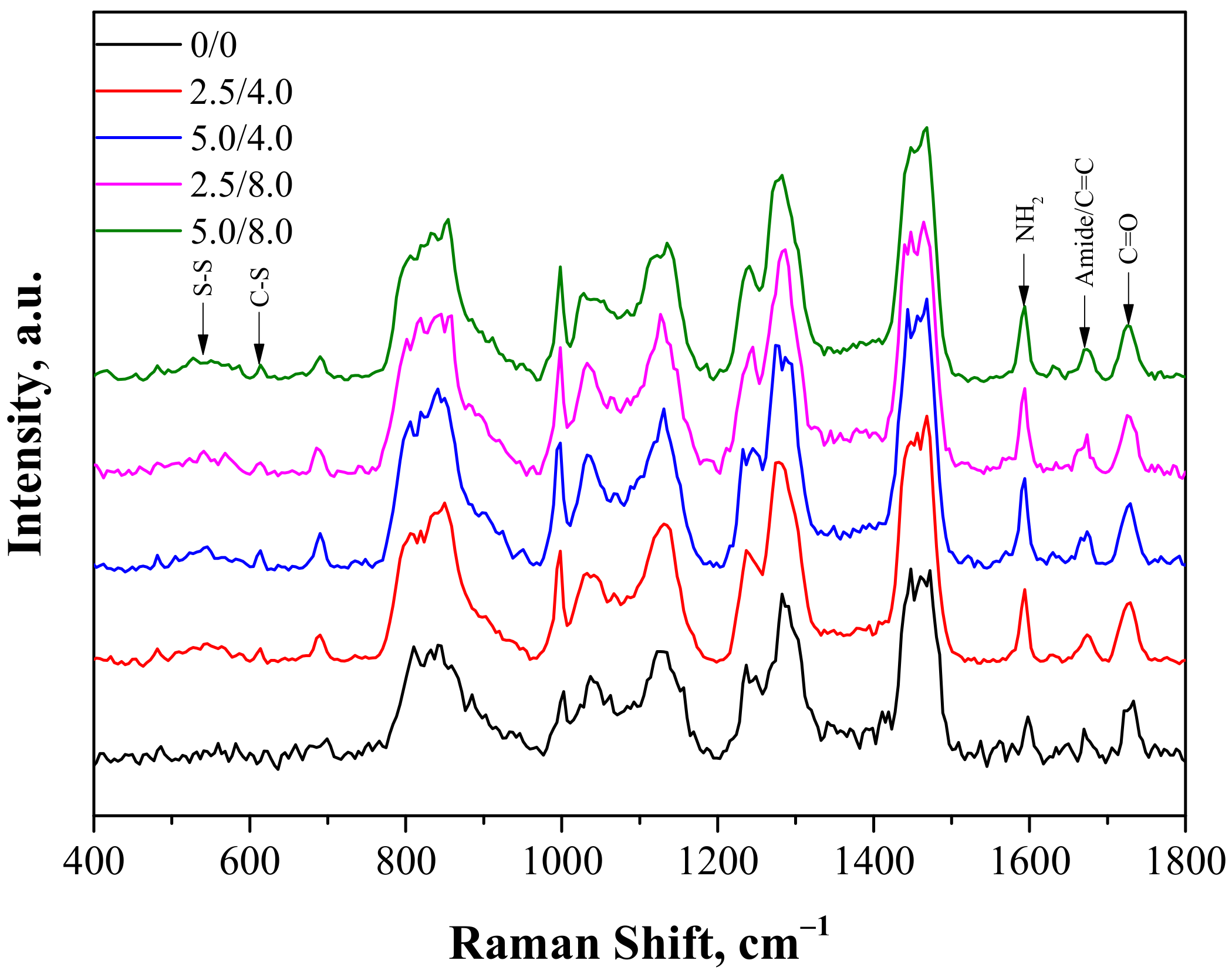

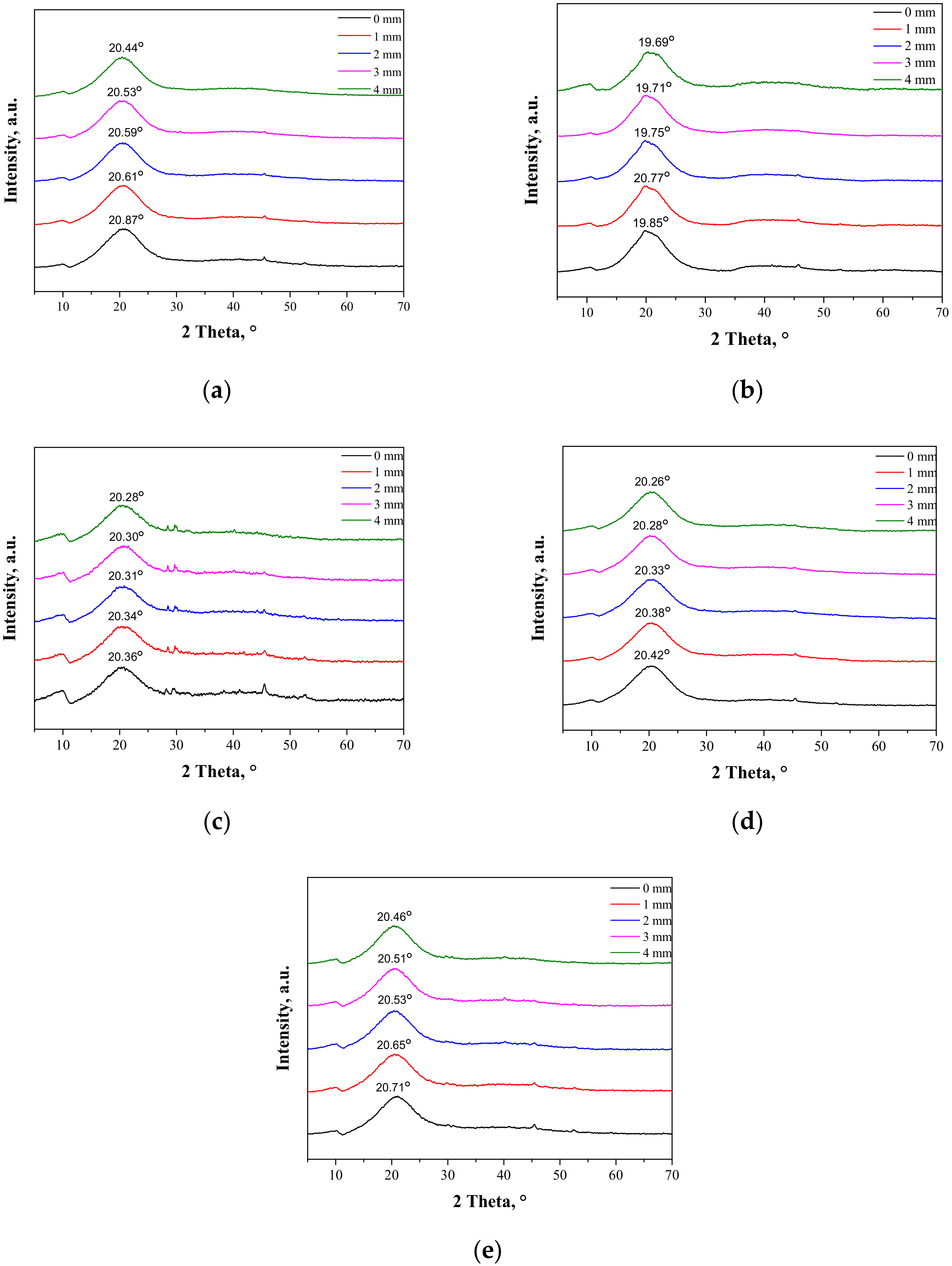


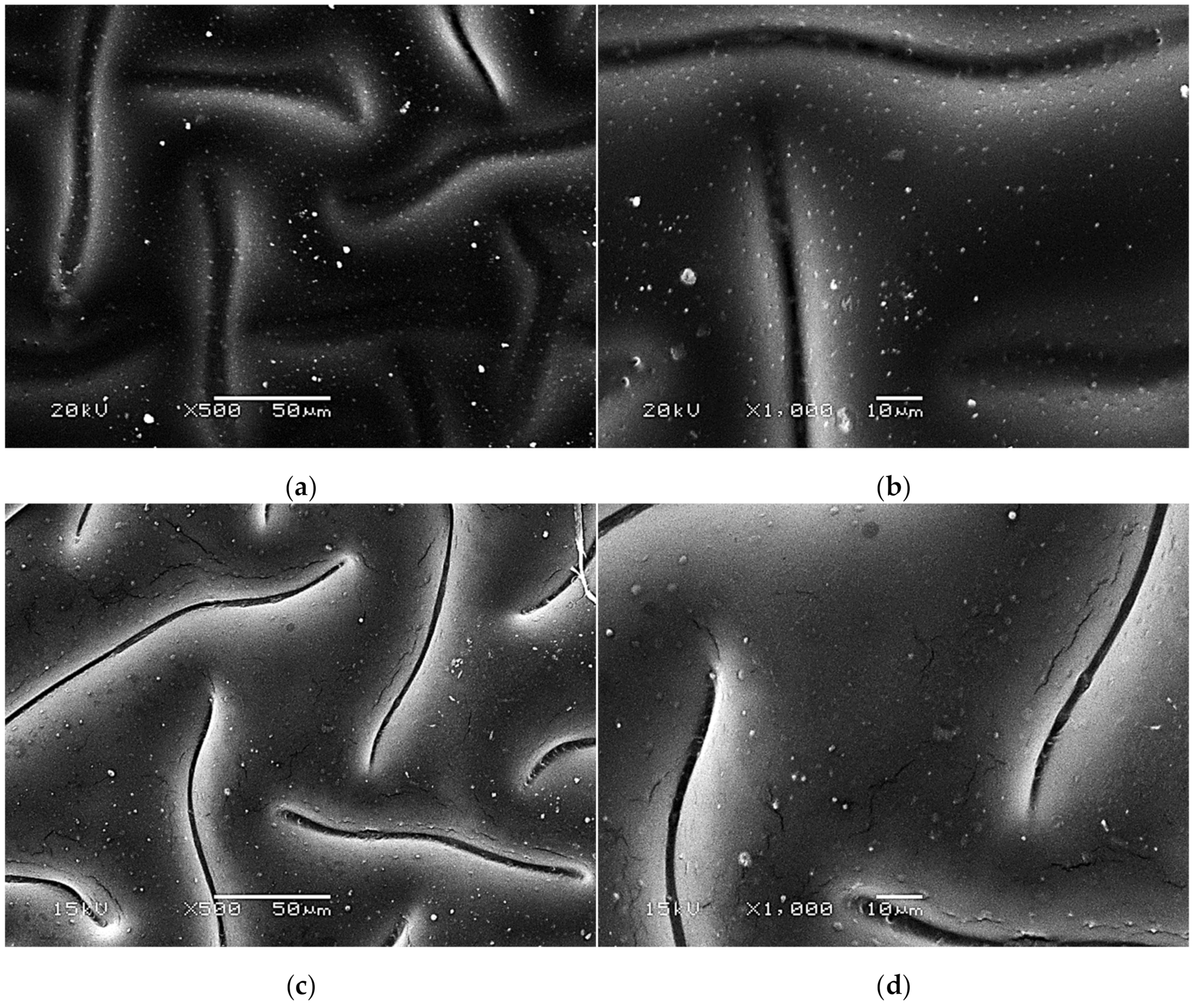
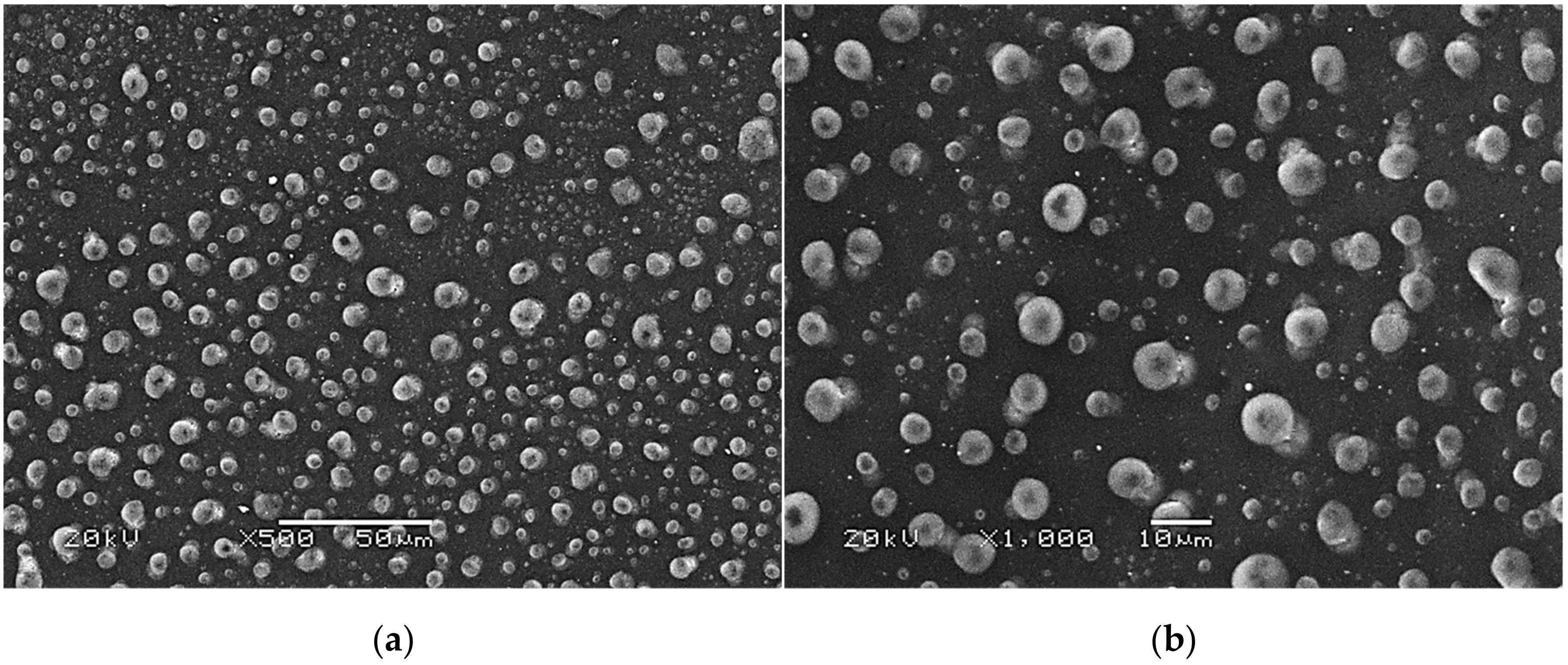
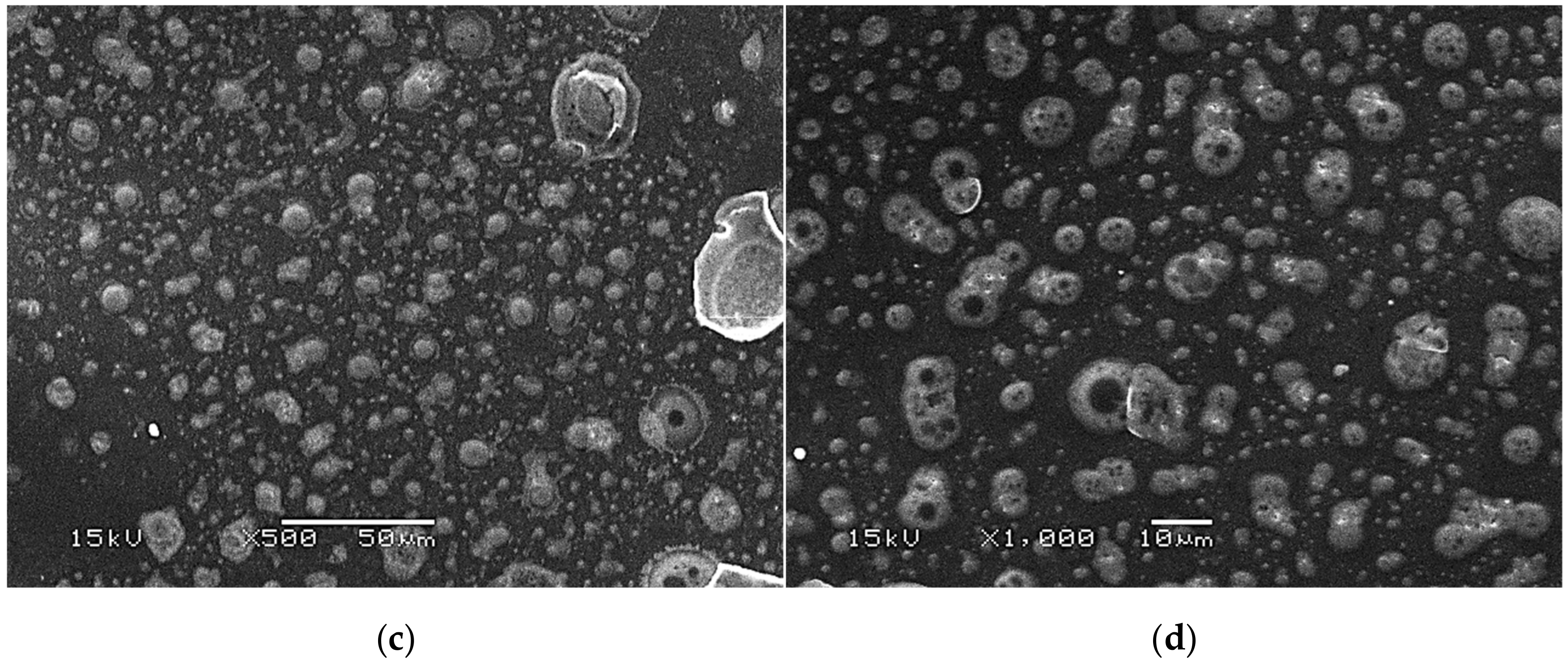
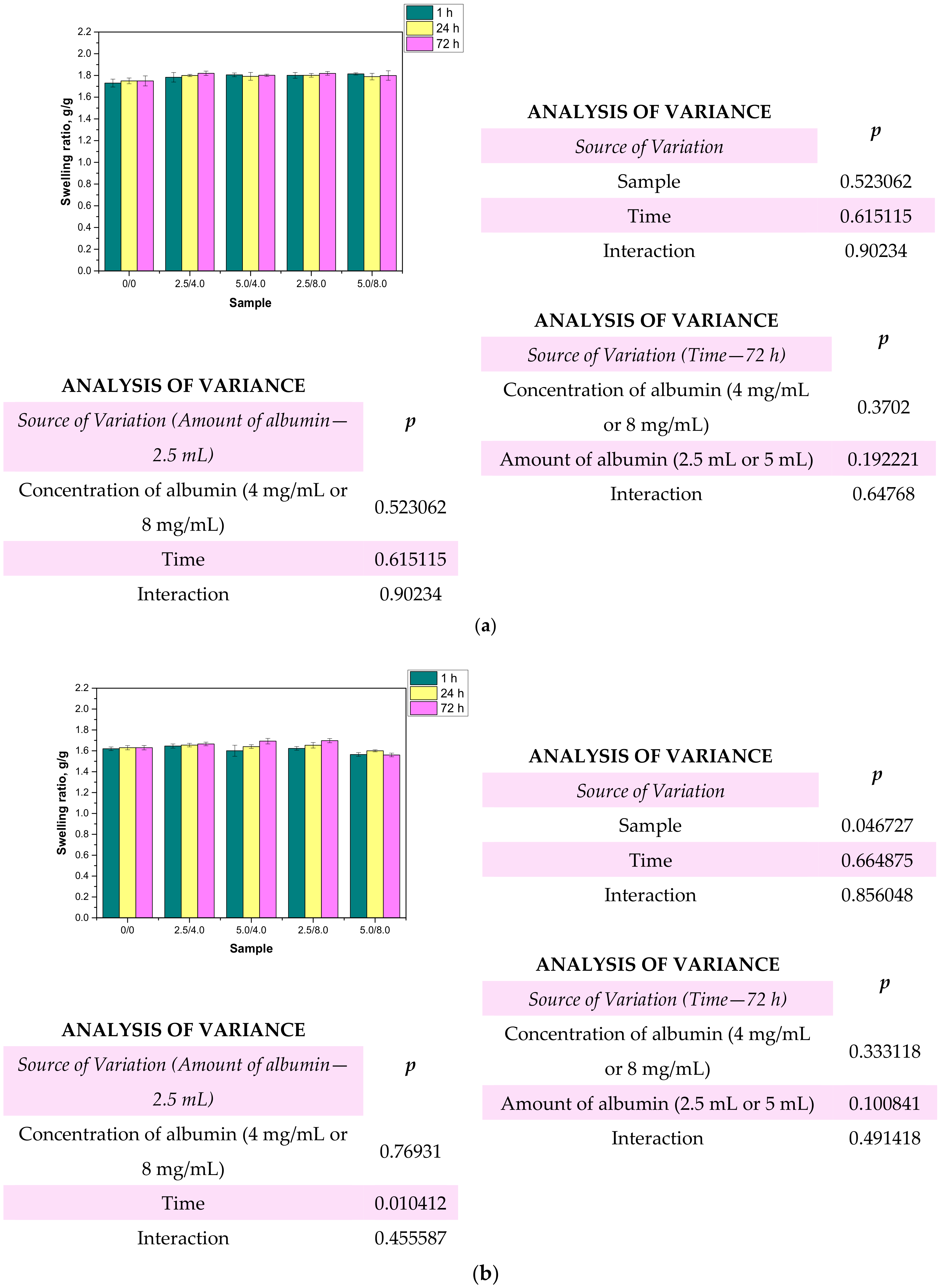
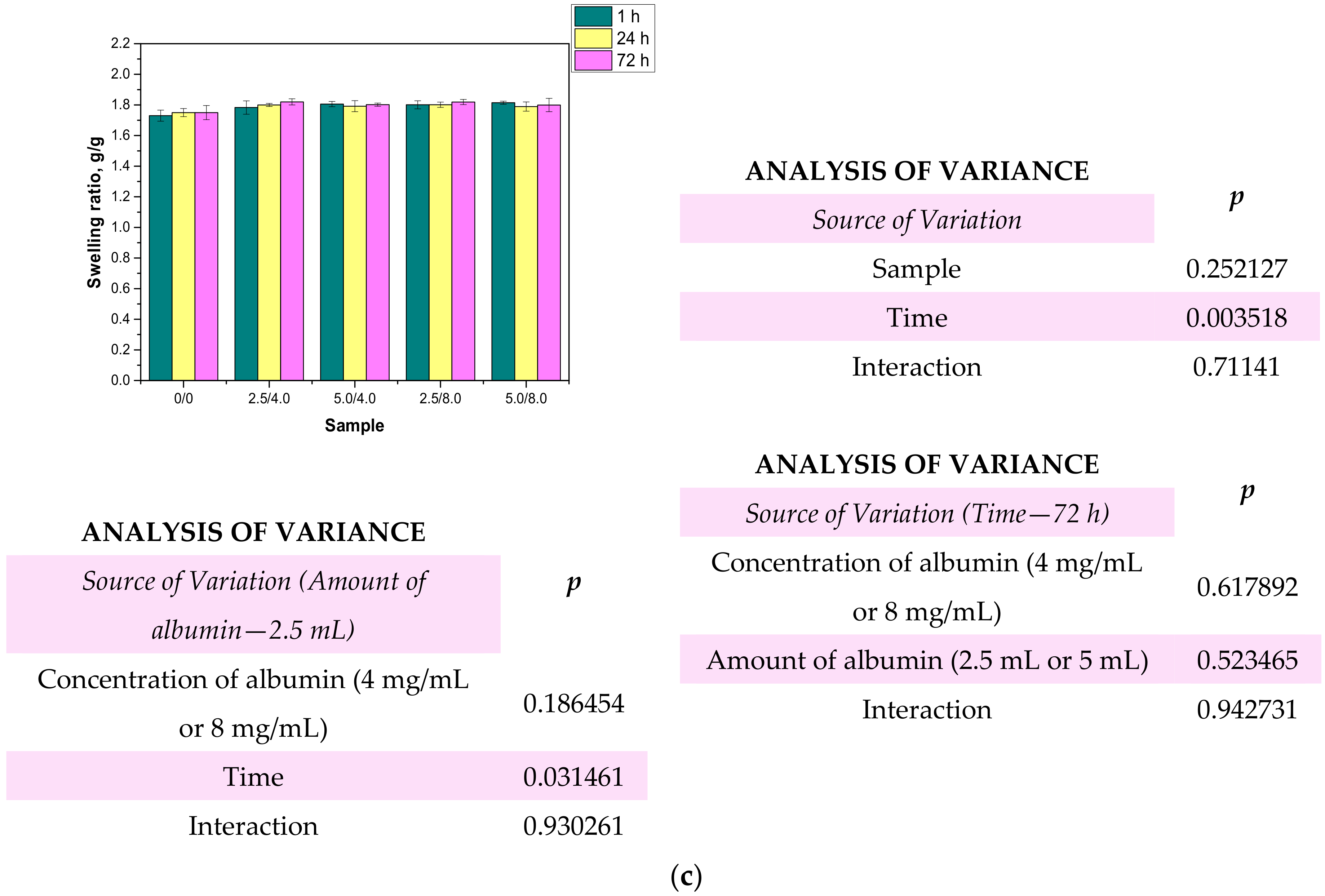
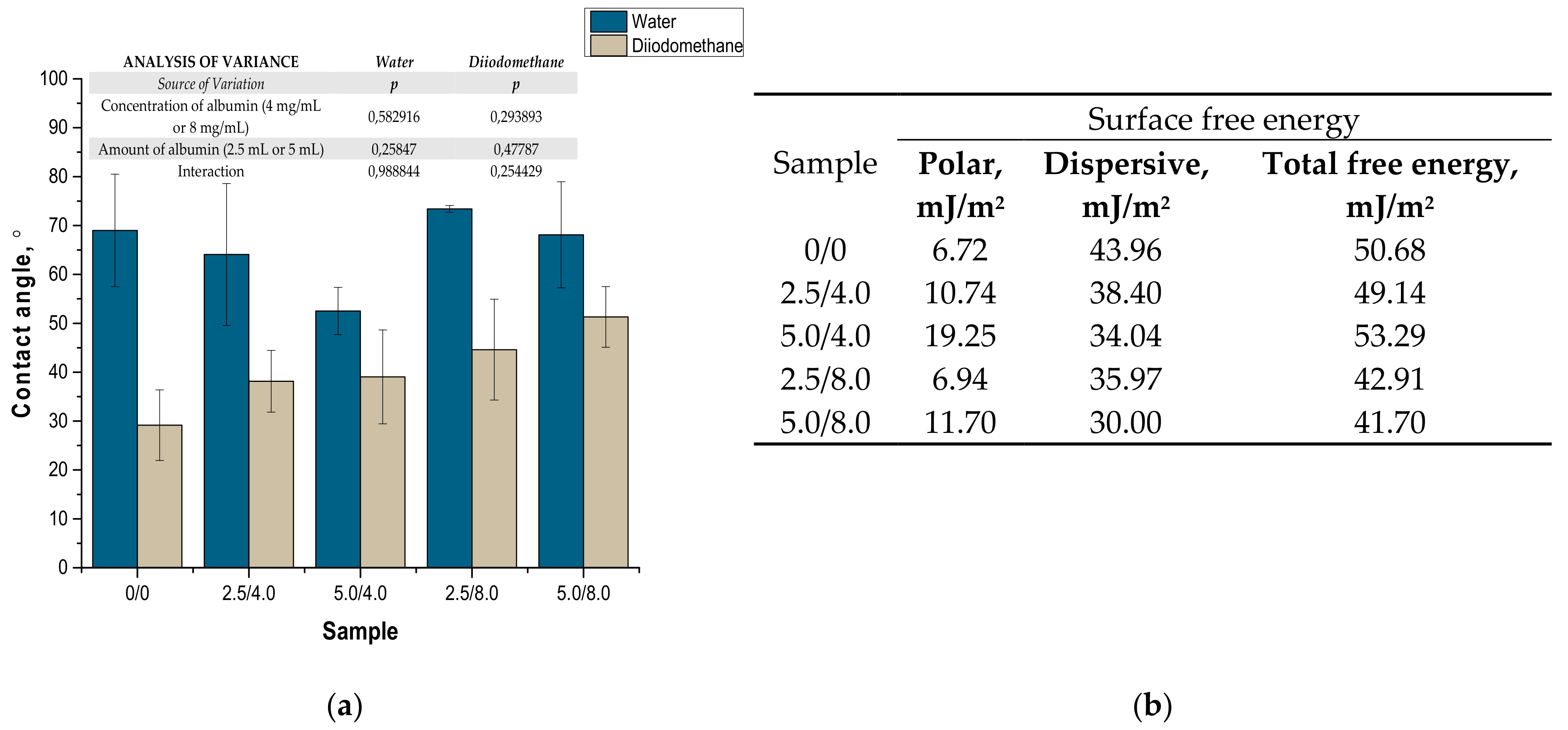


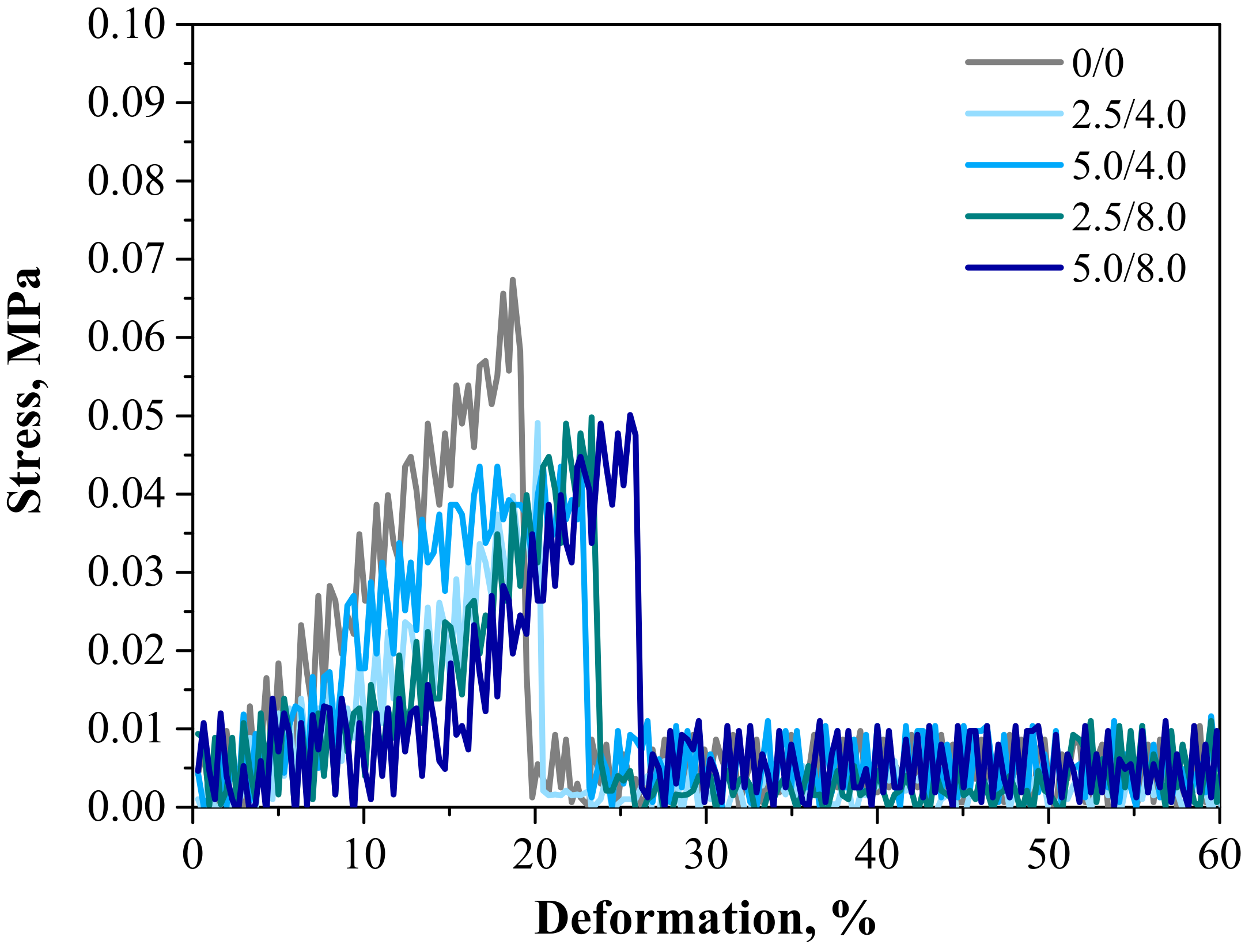


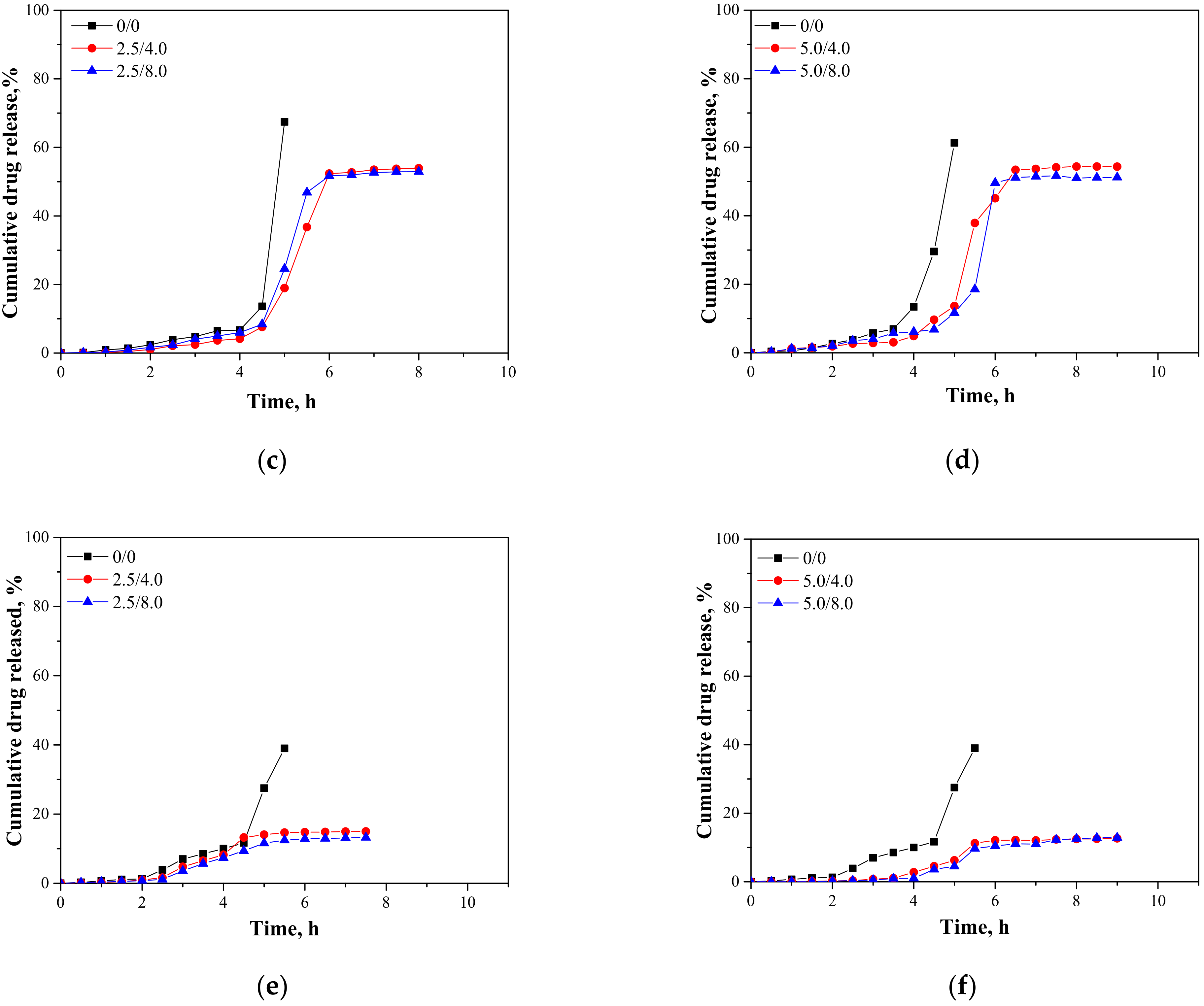
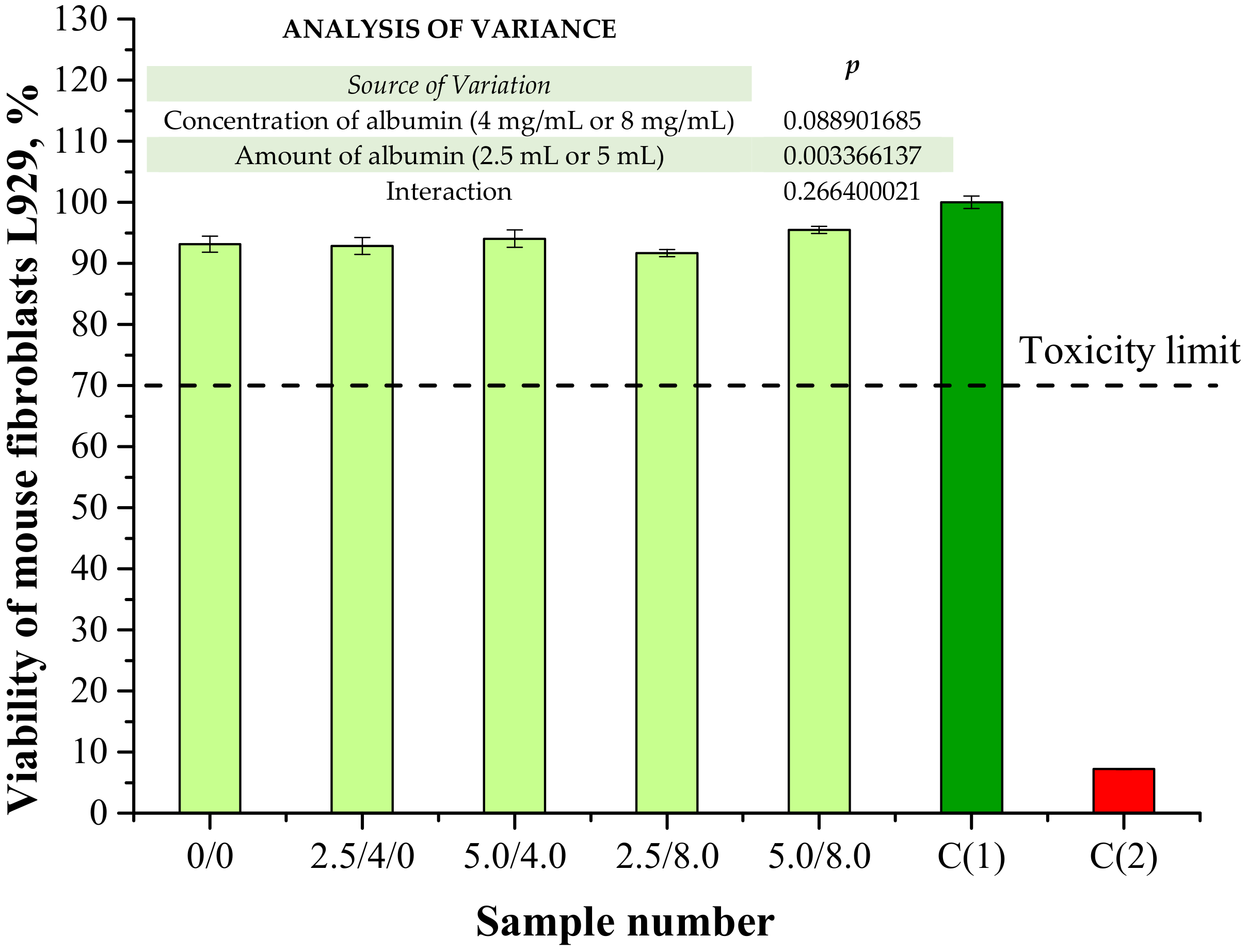
| Base Solution, mL | Photoinitiator *, mL | Crosslinking Agent **, mL | Aloe vera, mL | Albumin 4.0 mg/mL Solution, mL | Albumin 8.0 mg/mL Solution, mL | Sample Name |
|---|---|---|---|---|---|---|
| 50 | 0.5 | 12 | 10 | - | - | 0/0 |
| 2.5 | - | 2.5/4.0 | ||||
| 5.0 | - | 5.0/4.0 | ||||
| - | 2.5 | 2.5/8.0 | ||||
| - | 5.0 | 5.0/8.0 |
| Ion | Concentration, mmol/L | Ion | Concentration, mmol/L |
|---|---|---|---|
| Na+ | 142.0 | Cl− | 103.0 |
| K+ | 5.0 | HPO42− | 27.0 |
| Mg2+ | 1.5 | HCO3− | 1.0 |
| Ca2+ | 2.5 | SO42− | 0.5 |
Publisher’s Note: MDPI stays neutral with regard to jurisdictional claims in published maps and institutional affiliations. |
© 2021 by the authors. Licensee MDPI, Basel, Switzerland. This article is an open access article distributed under the terms and conditions of the Creative Commons Attribution (CC BY) license (https://creativecommons.org/licenses/by/4.0/).
Share and Cite
Kudłacik-Kramarczyk, S.; Głąb, M.; Drabczyk, A.; Kordyka, A.; Godzierz, M.; Wróbel, P.S.; Krzan, M.; Uthayakumar, M.; Kędzierska, M.; Tyliszczak, B. Physicochemical Characteristics of Chitosan-Based Hydrogels Containing Albumin Particles and Aloe vera Juice as Transdermal Systems Functionalized in the Viewpoint of Potential Biomedical Applications. Materials 2021, 14, 5832. https://doi.org/10.3390/ma14195832
Kudłacik-Kramarczyk S, Głąb M, Drabczyk A, Kordyka A, Godzierz M, Wróbel PS, Krzan M, Uthayakumar M, Kędzierska M, Tyliszczak B. Physicochemical Characteristics of Chitosan-Based Hydrogels Containing Albumin Particles and Aloe vera Juice as Transdermal Systems Functionalized in the Viewpoint of Potential Biomedical Applications. Materials. 2021; 14(19):5832. https://doi.org/10.3390/ma14195832
Chicago/Turabian StyleKudłacik-Kramarczyk, Sonia, Magdalena Głąb, Anna Drabczyk, Aleksandra Kordyka, Marcin Godzierz, Paweł S. Wróbel, Marcel Krzan, Marimuthu Uthayakumar, Magdalena Kędzierska, and Bożena Tyliszczak. 2021. "Physicochemical Characteristics of Chitosan-Based Hydrogels Containing Albumin Particles and Aloe vera Juice as Transdermal Systems Functionalized in the Viewpoint of Potential Biomedical Applications" Materials 14, no. 19: 5832. https://doi.org/10.3390/ma14195832
APA StyleKudłacik-Kramarczyk, S., Głąb, M., Drabczyk, A., Kordyka, A., Godzierz, M., Wróbel, P. S., Krzan, M., Uthayakumar, M., Kędzierska, M., & Tyliszczak, B. (2021). Physicochemical Characteristics of Chitosan-Based Hydrogels Containing Albumin Particles and Aloe vera Juice as Transdermal Systems Functionalized in the Viewpoint of Potential Biomedical Applications. Materials, 14(19), 5832. https://doi.org/10.3390/ma14195832











